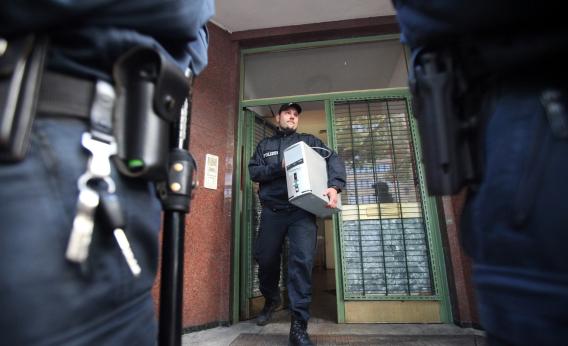U.N. Report Reveals International Protocol for Tracking People Online

Photo by Bodo Marks/AFP/Getty Images
In the shadowy world of electronic surveillance, tactics used by law enforcement agencies are rarely revealed. But now an international protocol about how to best monitor and track people online has been disclosed for the first time—offering a unique insight into covert police methodology.
Buried in a recent 158-page U.N. report on how terrorists use the Internet is the so-called “protocol of a systematic approach.” The protocol, which was authored by an elite Italian special operations unit called the Raggruppamento, is significant because it has been implemented by authorities across the world, according to the United Nations.
The document outlines the stages law enforcement agencies should go through when conducting electronic surveillance of suspects: first, by obtaining data and “cookies” stored by websites like Facebook, Google, eBay and Paypal; second, by obtaining location data from servers used by VoIP Internet phone services (like Skype); then, by conducting a “smart analysis” of these data before moving on to the most serious and controversial step: intercepting communications, exploiting security vulnerabilities in communications technologies for “intelligence-gathering purposes,” and even infecting a target computer with Trojan-horse spyware to mine data.
Almost without exception, law enforcement agencies around the world refuse to talk publicly about these tactics and how they use them because they say doing so could compromise security. Despite civil liberties groups pushing for more transparency, internal police surveillance manuals or guidelines are closely guarded, and on the rare occasions they are released, they will tend to be heavily redacted.
That is why it is highly unusual that the United Nations has chosen to publish the protocol in full—and why attention being drawn to it might unsettle police chiefs. Arianna Lepore of the U.N. Office on Drugs and Crime, which was responsible for the report, told me the protocol was shared by Italian military police agency the Carabinieri during working group meetings with law enforcement held in Vienna between October 2011 and February 2012. When I told Lepore I was surprised it had been published, shattering the usual secrecy around such matters, she said, “We are transparent in what we do,” adding that the aim of publication was to share good practices that have been established and to help train judges and prosecutors.
According the U.N. report, aside from serving as a guide for many of the 190 member states signed up to international police agency INTERPOL, the protocol is used as part of a prestigious cybercrime course at University College Dublin, Ireland, which is open only to members of the law enforcement community. The Dublin university confirmed the guideline had been recently implemented into the course, but declined to comment further. I can find no mention of the protocol on the Internet prior to the U.N. report—published in late October—which suggests it has until now been kept as information for law enforcement eyes only.
You can read it in full below.
Future Tense is a partnership of Slate, New America, and Arizona State University.

